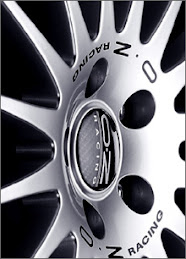The Zonda F is a custom built car made primarily of carbon fibre, of aluminium alloys, titanium, avional, chrome-molybdenum alloy and selected leathers. Some of these materials are transformed using the most advanced technologies… others, by the best craftsmen. Pagani checks the quality of each individual piece and collects the technical data to form a manual; one for each car, creating a detailed and faithful representation, much the same as an artist's portrait. Only in aviation does this happen today. And up until now only the Zonda, can claim to be made this way. The Zonda F is made by hand, The idea has been to create a car that was light, safe, original yet offering great performance, using the best technology available and inspired by racing cars, the same concept that inspired the creation of the fantastic Miura of the '60's.
| Pagani Zonda F Data | | |
|---|---|---|
| Base Price | $741,000 | |
| Power | 602 hp | |
| Zero to 60 mph | 3.6 s | |
| Zero to 100 mph | N/A | |
| Top speed | 214 mph / 345 km/h | |
The Zonda C12 F debuted at the 2005 Geneva Motor Show . It is the most extensive reengineering of the Pagani car yet, though it shares much with its predecessors including the 7.3 L V12. Power is increased to 602 PS (443 kW/594 hp) with a special clubsport model producing 650 PS (478 kW/641 hp). The company promises a 3.5 second sprint to 60 mph (97 km/h, a top speed over 344 km/h (214 mph) and it will be the queen in braking from 300 km/h to 0 (186 mph to 0). The Zonda F clubsport has a power to weight ratio of 521 bhp/ ton (384 W/kg) . Compare, for example, the Enzo Ferrari which has a power to weight ratio of 483 bhp/ ton (356 W/kg) .
The Zonda F will be built in a new factory capable of producing 250 cars per year. 70 of these cars per year will be the first Paganis to officially be offered in the United States, though four prior Zondas were imported for racing. The company plans to complete full Federalization, including crash testing, before the introduction of the car in 2007 .
Aerodynamics - When it starts moving, the Zonda F slices through the air with hardly any effort. Some of its power is used to force the car down onto the tarmac resulting in a very strong ground effect, so that the tyres are glued to the road, transferring all the car's power and torque to it. According to a simple equation the grip is a result of the material's friction coefficient times the applied force. This principle can then be turned into top rate performance if the tyre size and the vehicle speed are record breaking. Aerodynamics however are even more crucial where safety is concerned: when breaking for an emergency, when reaction times are even more critical and when road holding can make all the difference.
The Zonda F - 300 to 0. And it's not just about having a cutting-edge carbonceramic breaking system. Effective breaking is dependant on exploiting an array of forces; by utilizing the shock absorber geometry, the low center of gravity and the reduced weight, we manage to keep the car as flat on the ground as possible while countering any pitching effect. This way even the rear tyres remain stuck to the ground. Added to this the excellent ABS system, developed by Bosch, is at its best when the situation gets really tricky. It's a very reactive, safe car, with no roll to speak of. Through its Nardi steering wheel, one's hands feel directly in contact with the road surface. The electronics are kept to a minimum. While the comfort is unusual for a supercar capable of reaching speeds of over 340 km/h.
Pagani Zonda official website





















No comments:
Post a Comment